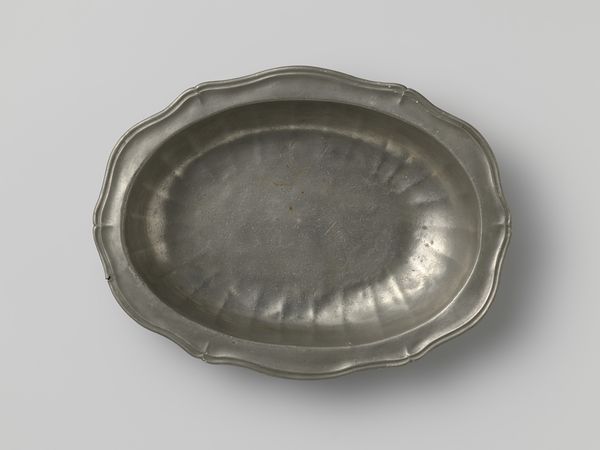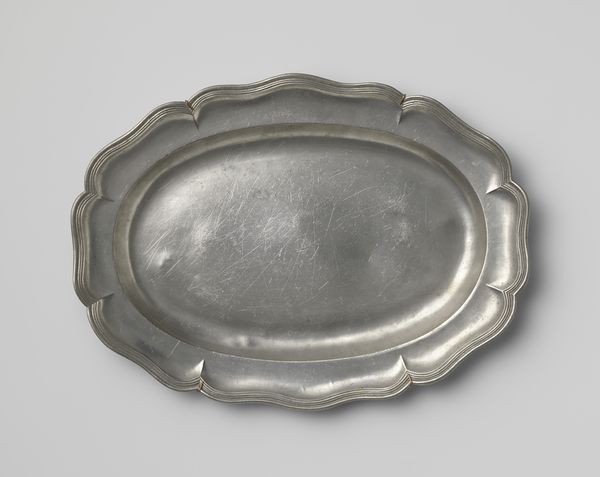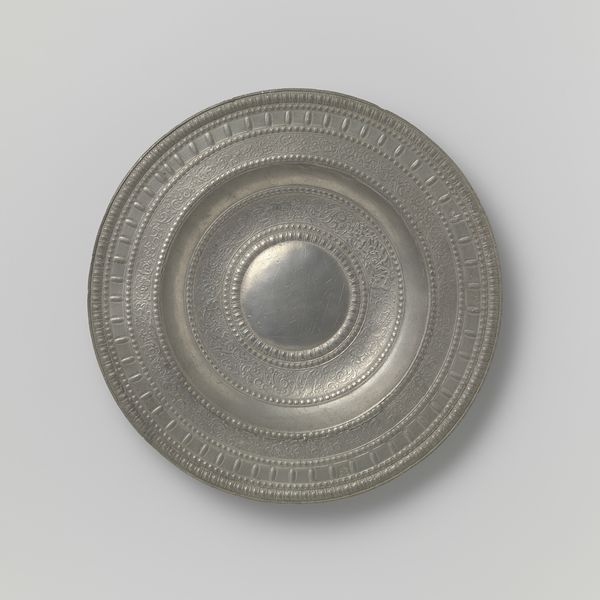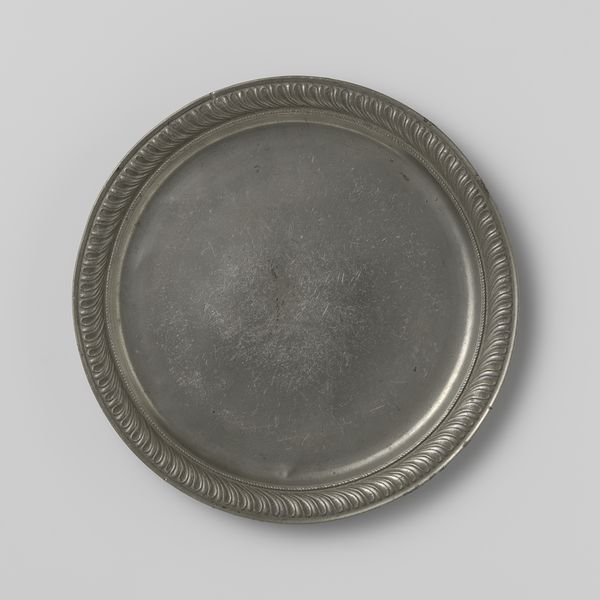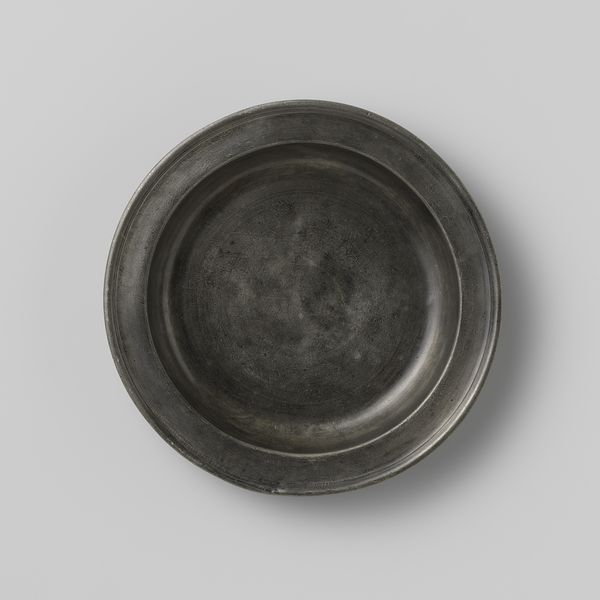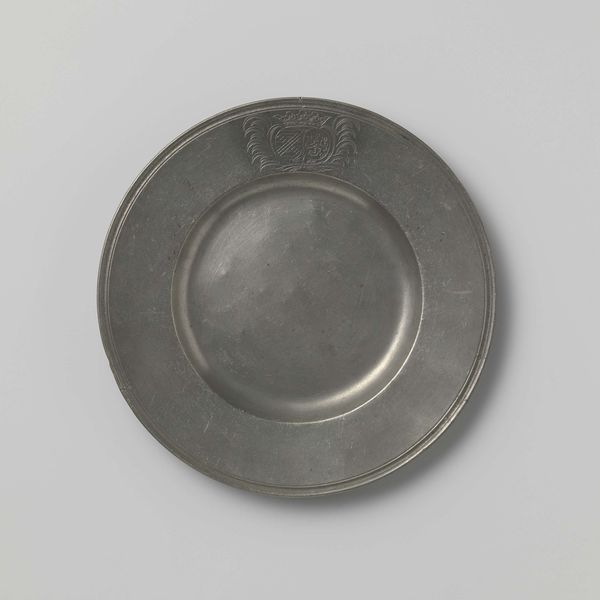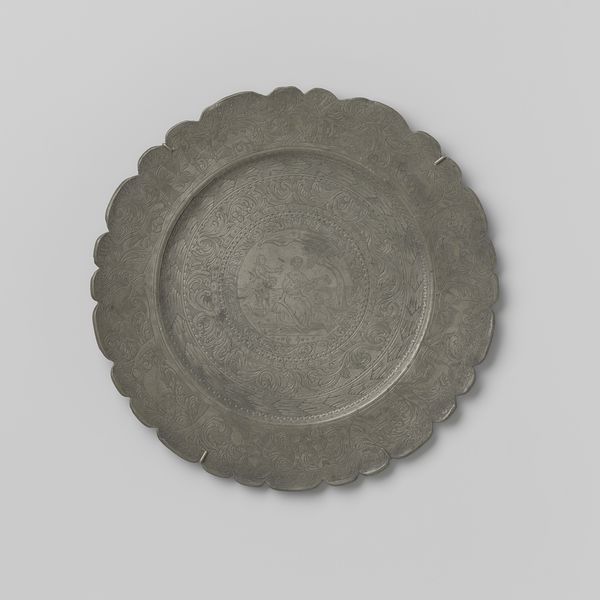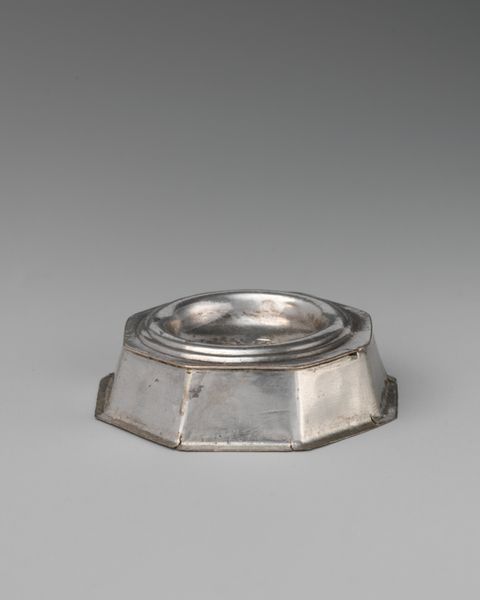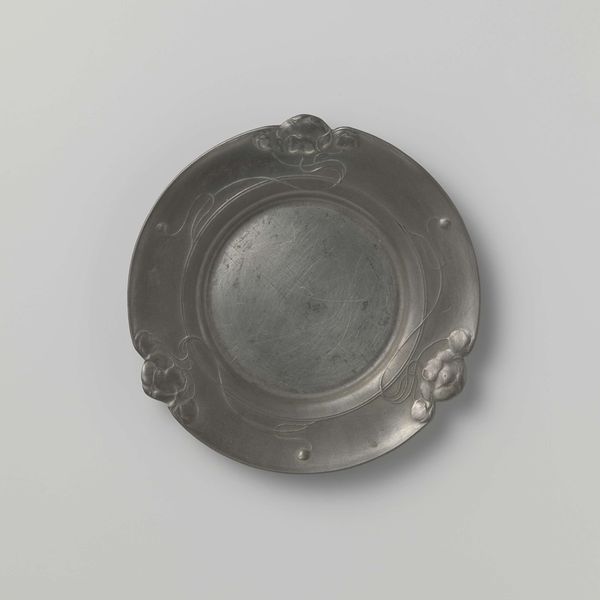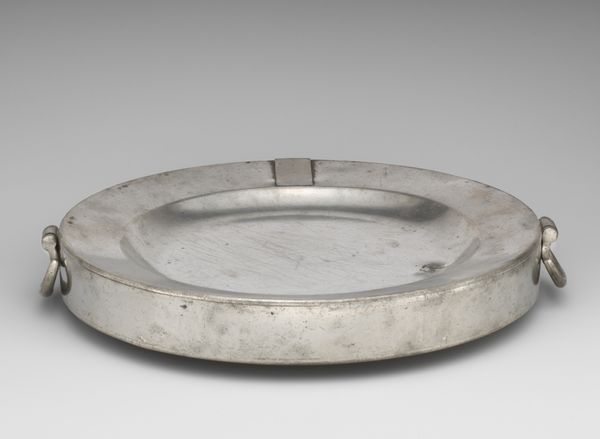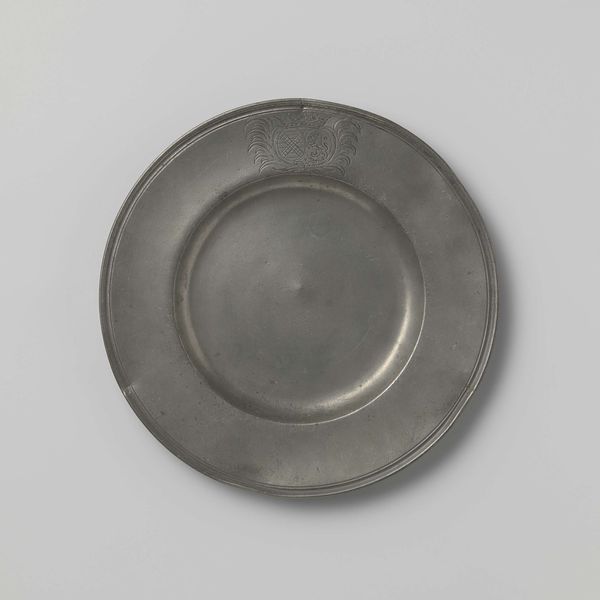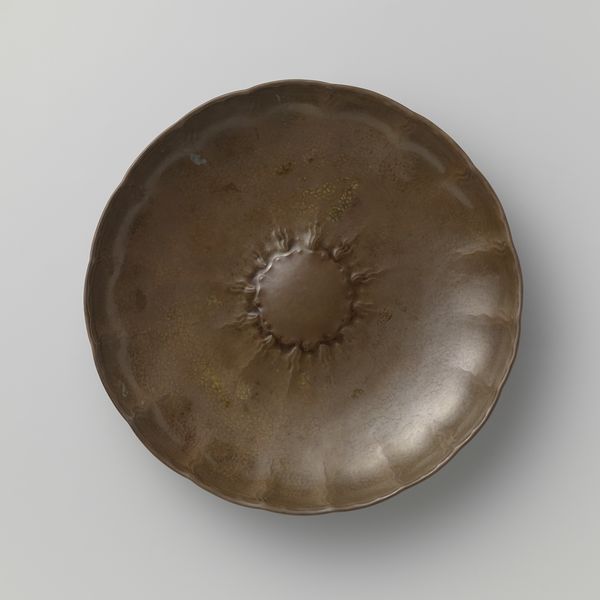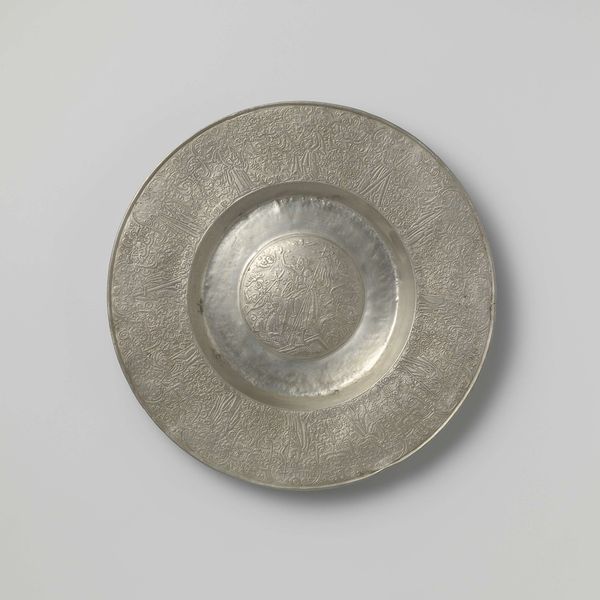
metal, ceramic
#
metal
#
ceramic
#
decorative-art
Dimensions: height 4.2 cm, diameter 37 cm
Copyright: Rijks Museum: Open Domain
Curator: Immediately I see the quiet strength in this piece; its monochrome palette is deceptive. It practically demands to be touched, to be held, to tell tales of the feasts and famines it has witnessed. Editor: The piece we’re admiring is a pewter Schotel met geschulpte rand, or dish with scalloped edges, created sometime between 1770 and 1795. The maker remains unknown, yet its significance endures. Curator: Exactly! Isn't it amazing how something so seemingly simple can resonate so deeply? Those subtle scallops, almost like tiny waves, suggest constant motion and renewal, an undercurrent of energy. Editor: Indeed, scallops throughout art history signify pilgrimage and journey, reflecting the passage of food and sustenance over this very surface, bearing cultural rituals from across generations. The material is particularly interesting, offering an understated elegance for domestic life. Curator: Elegance with purpose! This wasn't about showy decoration, but daily ritual. It almost whispers of family meals, candlelight, and quiet conversations—an era encapsulated. Though, is it merely decorative, or might we also see something of the spirit of commerce here? Editor: The use of pewter underscores burgeoning trade routes and social mobility. This wasn't rare silver, reserved for aristocracy; pewter signalled that access to such refined materials was increasingly attainable within a broader class structure. Curator: Beautifully said. So even the material itself whispers of a shift, a changing world reflected on a humble, but lovingly-wrought surface. The plate reminds me, perhaps paradoxically, of impermanence, and the cyclical nature of beauty. Editor: In summary, a deep meditation of craft tradition and its role in creating lasting social and symbolic values—all embedded in a single utilitarian piece. Curator: I'm struck by how this plate teaches me that beauty really is to be found everywhere if we simply take a moment to see. Editor: Ultimately, we see mirrored in it both history and ourselves.
Comments
No comments
Be the first to comment and join the conversation on the ultimate creative platform.

